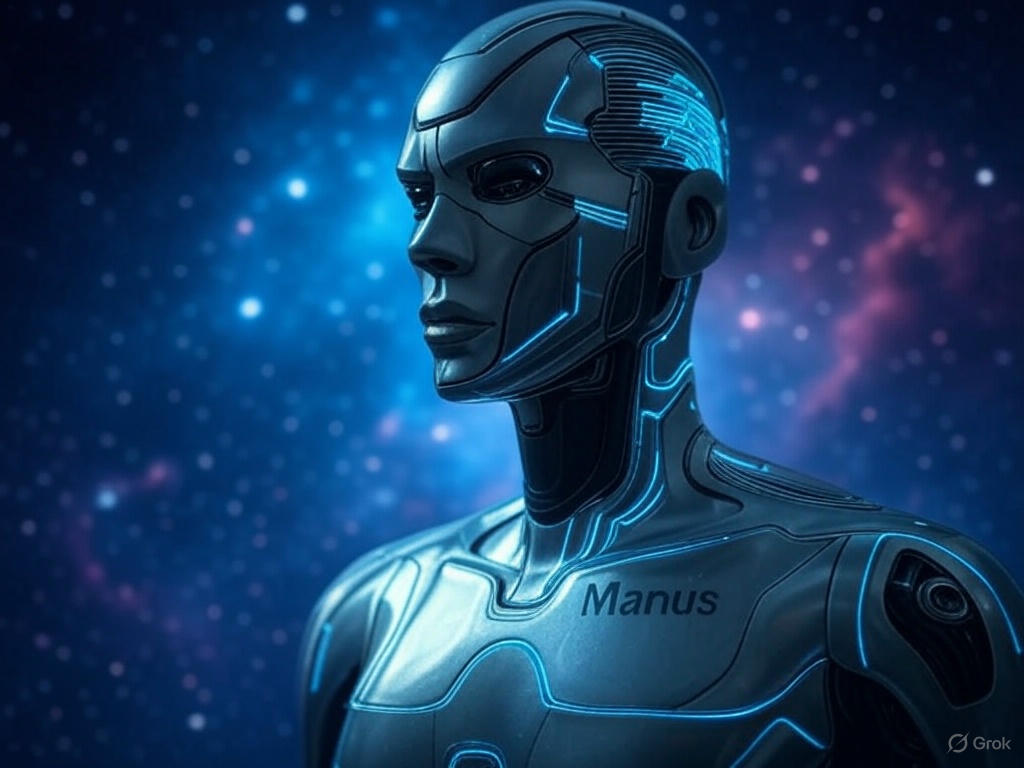Manus.im: A Comprehensive Overview of the World’s First Fully Autonomous AI Agent

In the rapidly evolving landscape of artificial intelligence (AI), a new player has emerged from China, capturing the attention of tech enthusiasts, industry experts, and casual users alike. Manus.im, the official website of Manus, proudly introduces what its creators at Monica, a Chinese startup, claim to be the world’s first fully autonomous AI agent. Launched on March 6, 2025, Manus has quickly risen to prominence, sparking debates about its capabilities, its place in the global AI race, and its potential to redefine how we interact with technology. This article delves into every facet of Manus.im—its origins, features, technical architecture, real-world applications, performance benchmarks, and the broader implications of its existence.
The Birth of Manus: A New Era in AI
Manus, derived from the Latin word for “hand,” symbolizes a bridge between thought and action. Developed by Monica, a startup focused on next-generation AI solutions, Manus was unveiled to the world with a bold promise: to transcend the limitations of traditional AI chatbots by autonomously executing complex tasks. Unlike conventional models like ChatGPT or DeepSeek, which primarily respond to prompts with text-based outputs, Manus is designed to take initiative, plan, and deliver tangible results without constant human oversight. Its official launch on March 6, 2025, was met with international intrigue, amplified by endorsements from tech luminaries such as Twitter co-founder Jack Dorsey and Hugging Face’s Victor Mustar.
The website, Manus.im, serves as the digital gateway to this innovative AI agent. It showcases a sleek, user-friendly interface that highlights Manus’s capabilities through demos, case studies, and a clear call-to-action for interested users to join its invite-only beta phase. The site positions Manus as a versatile tool for both personal and professional use, emphasizing its ability to handle real-world tasks with unprecedented autonomy.
Core Features of Manus
At the heart of Manus lies its ability to operate as a general-purpose AI agent. Unlike specialized AI systems confined to narrow domains, Manus boasts a broad spectrum of capabilities. Its key features include:
- Autonomous Task Execution: Manus can interpret high-level instructions, break them into actionable steps, and complete them independently. For instance, when tasked with planning a trip to Japan, it researches destinations, compiles itineraries, and produces a tailored travel handbook—all without further input.
- Multi-Agent Architecture: Manus operates using a sophisticated system of sub-agents, each specializing in tasks like planning, data retrieval, or coding. A central “executor” agent coordinates these efforts, ensuring seamless collaboration.
- Cloud-Based Asynchronous Operation: Running in a virtual computing environment, Manus works in the background, allowing users to assign tasks and log off while it processes requests. Results are delivered via notifications, enhancing efficiency.
- Transparency via “Manus’s Computer”: A unique side panel displays its workflow in real-time, letting users observe and intervene if needed. This transparency sets it apart from “black-box” AI systems.
- Multi-Modal Processing: Manus handles text, images, and code, enabling it to generate reports, analyze data visualizations, or even build functional websites from scratch.
These features collectively position Manus as a groundbreaking tool, blending the creativity of large language models (LLMs) with the practicality of actionable outcomes.
Technical Foundations
While Monica has not fully disclosed Manus’s technical architecture, insights from co-founder Ji Yichao and industry analyses reveal a hybrid approach. Manus leverages existing LLMs, including Anthropic’s Claude 3.5 Sonnet and fine-tuned versions of Alibaba’s Qwen models, rather than relying on a proprietary foundational model. This decision reflects a pragmatic strategy: building a highly capable system by optimizing pre-existing technologies.
Manus integrates with 29 external tools and open-source software, such as browser control systems, enabling it to navigate websites, execute scripts, and interact with APIs. Its multi-agent framework mimics human workflows, with specialized sub-agents handling distinct aspects of a task—research, analysis, or output generation—under the supervision of the executor agent. This architecture allows Manus to tackle complex, multi-step processes, such as screening resumes or conducting stock market analyses, with remarkable efficiency.
Launch and Initial Reception
The launch of Manus on March 6, 2025, was a viral event, fueled by social media buzz and media coverage. Within days, its Discord server swelled to over 138,000 members, and invite codes were reportedly sold for thousands of dollars on China’s Xianyu marketplace. Industry leaders praised its potential, with investor Andrew Wilkinson describing it as “insane” and a glimpse “six months into the future.” However, the hype was tempered by limited access—fewer than 1% of waitlist users received invites due to server constraints, a challenge acknowledged by Monica’s product partner, Zhang Tao.
Early testers lauded Manus’s ability to handle tasks like analyzing Tesla stock trends or curating property listings based on multiple criteria. Yet, some reported issues, including system crashes, looping errors, and difficulties with paywalled content or captchas, suggesting that Manus, while promising, was still in its infancy.
Capabilities and Real-World Applications
Manus.im highlights a variety of use cases that demonstrate its versatility:
- Travel Planning: It compiles personalized itineraries by integrating travel data, weather forecasts, and user preferences.
- Financial Analysis: Manus delivers in-depth stock reports with interactive dashboards, analyzing market performance and financial outlooks.
- Content Creation: From educational presentations to marketing campaigns, it produces polished outputs tailored to specific audiences.
- Business Automation: It compares insurance policies, sources suppliers, or optimizes hiring by ranking candidates based on market trends.
These applications underscore Manus’s potential to revolutionize productivity across industries, acting as a digital assistant that doesn’t just suggest—it executes.
Performance Benchmarks: The GAIA Standard
Manus’s performance has been measured against the GAIA benchmark, a respected test of real-world problem-solving skills developed by Meta AI, Hugging Face, and AutoGPT. Reports suggest Manus achieved scores as high as 86.5% on basic tasks, outperforming OpenAI’s Deep Research (74.3%) and other state-of-the-art models. On intermediate and complex tasks, it maintained a lead, scoring 70.1% and 57.7%, respectively. While exact figures remain unverified due to limited public data, these results position Manus as a top contender in autonomous AI.
Recent Updates and Future Roadmap
Since its launch, Monica has worked to address initial hiccups. A partnership with Alibaba’s Qwen team, announced days after the debut, aims to bolster server capacity and expand its user base, particularly in China. Plans to upgrade Manus to Anthropic’s newer Claude 3.7 model promise enhanced reasoning and execution capabilities. Additionally, Monica intends to open-source parts of Manus’s tech stack by late 2025, fostering community-driven innovation and potentially accelerating its development.
Challenges and Criticisms
Despite its achievements, Manus faces scrutiny. Critics argue it’s a “wrapper” of existing models rather than a groundbreaking innovation, questioning its long-term impact. Stability issues, such as server overload and task failures, have frustrated early users, while its invite-only model has sparked accusations of scarcity marketing. Privacy concerns also loom, with its Singapore-based legal entity (Butterfly Effect PTE. LTD.) and possible data transfers to China raising red flags for data protection advocates.
Implications for the AI Landscape
Manus’s emergence signals a shift from passive AI assistants to proactive agents capable of independent action. It challenges Western dominance in AI, echoing the disruptive impact of DeepSeek earlier in 2025. If Monica delivers on its promises, Manus could democratize advanced automation, offering a low-cost alternative to expensive proprietary systems like OpenAI’s rumored $2,000-$20,000 AI agents. However, its success hinges on overcoming technical limitations and proving its reliability at scale.
Conclusion Manus
Manus.im is more than a website—it’s a window into the future of AI. Launched with ambition and backed by innovative engineering, Manus redefines what an AI agent can achieve. While it grapples with growing pains and skepticism, its potential to transform productivity and collaboration is undeniable. As Monica refines this pioneering tool and opens it to the world, Manus may well become a cornerstone of the next technological revolution, turning thoughts into actions with a single command.




